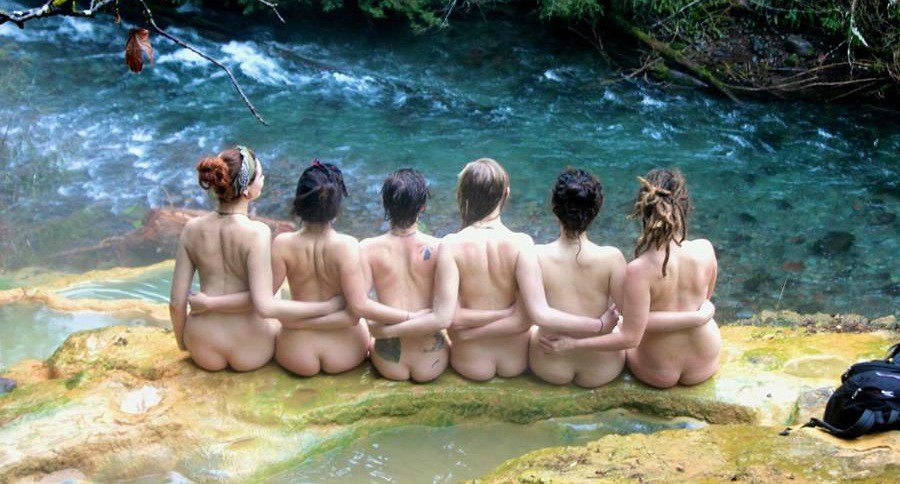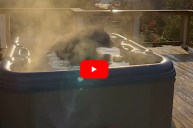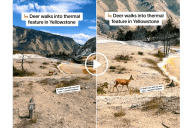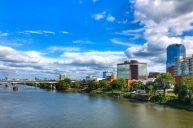Oregon's hot springs offer a calming, relaxing and therapeutic experience.
What better way to combat the extension of cold, rainy weather this spring than taking a dip in a hot spring? Geothermal activity naturally heats these springs, and the existing minerals in the water have medicinal properties that have made the healing potential of a hot springs soak a popular activity for thousands of years.
The high silica content of natural hot springs can potentially heal dry, rough skin. The medicinal properties of the sulfur content treats the symptoms of eczema and psoriasis. Magnesium has muscular benefits, and aids in healing arthritis and fibromyalgia. Calcium and sodium bicarbonate increase blood circulation and the natural heat from the water provides a soothing, relaxing, and healing experience.
The environment of each individual spring can vary from a popular resort to a little known secret. Each should be treated with respect to the land it sits on and the company that occupies it. These areas are pristine retreats that are known for their natural healing properties. Clothing optional areas should especially be treated with a fair amount of respect for others.
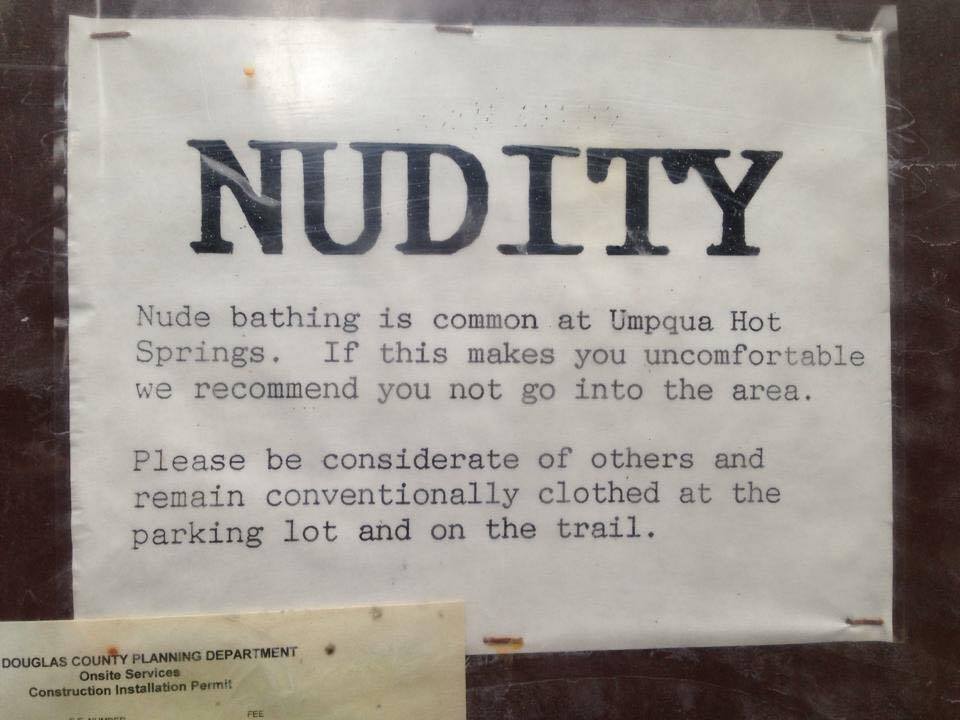
When exploring these areas, leave no trace behind, clean up after yourself, respect other people's space, privacy, and practice patience with others who are there for the same enjoyable experience.
While there are many hot springs in the Northwest, the following is a list of some of the more popular and desirable destinations. Public hot springs are managed by the U.S. Forest Service. They're typically less expensive than private hot springs resorts, but are often crowded on the weekends.
Bagby Hot Springs
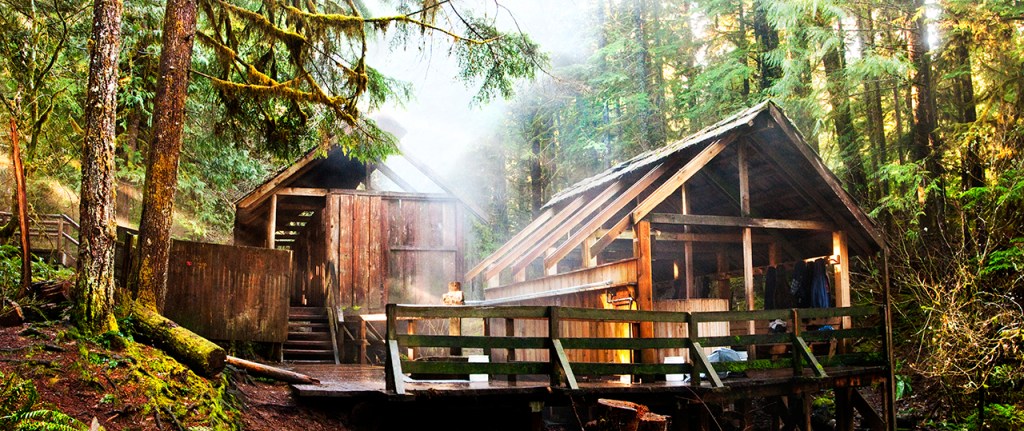
The Facilities at Bagby Hot Springs
Bagby hot springs is one of the more popular and widely recognized destinations. About 40 miles east of Estacada, it sits on a beautiful trail that winds 1.5 miles through an old growth forest. The springs flow down through hollowed logs and whiskey barrels.
There are private bathhouses where clothing is optional. These closed off areas offer some privacy, but nudity is not permitted in the open areas around the bathhouses. Law enforcement and Northwest Forest Conservancy volunteers check in at Bagby to ensure a safe and positive atmosphere.
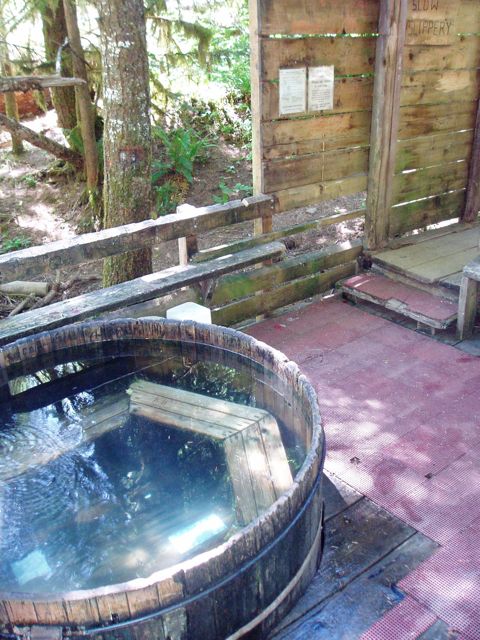
Soaking tub at Bagby
Space is limited, so weekends or holidays typically see a lot of traffic and involve a wait to access the soaking tubs. Waiting times can vary depending on the number of visitors, and it's best to be courteous to others and limit your soaking time.
Three bath houses are on site. The main bathhouse has five cedar log tubs, each in a private room. Another lower bathhouse has three log tubs as well as a large round tub located on an open deck. Another upper bathhouse is a few hundred feet from the other two, and has one large round tub on an open deck.
Bagby hot springs is open 24 hours year round, but snow often blocks access during winter.
Fees reach $5, and there's plenty more info here.
McCredie Hot Springs
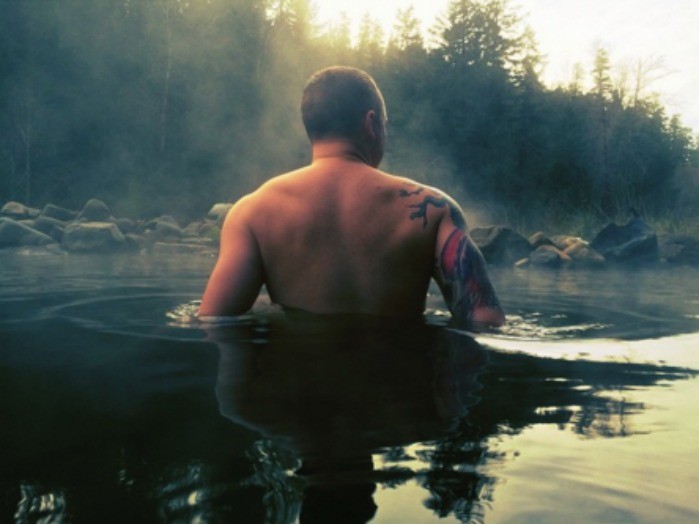
Instagram/PNWAdventurer
McCredie hot springs consists of several pools that sit at 2,000 feet of elevation on either side of Salt Creek, which is home to Oregon's second tallest waterfall just a short drive away from the springs.
The creek itself is cold and swift, but the springs can be potentially scalding hot with temperatures ranging from 98-114 degrees, with some spots exceeding to even higher temperatures. The largest pool is 30 to 35 feet wide, and the smallest is only a yard in diameter, both roughly 2 feet deep. Silt and organic debris are present at the bottom of the pools. This hot spring is clothing optional, and nudity is the norm.
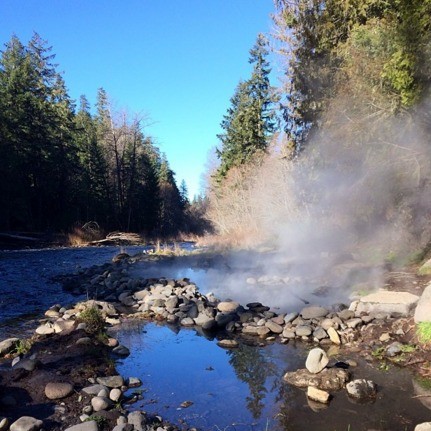
Instagram/MountainJacks
There is one hot spring that is located close to the road, often referred to as the "Trucker Spring," because it's location lends itself to a common pit-stop for 18 wheeler travelers. The other side of the river hosts additional hot springs that are less crowded, but difficult to reach unless the water is low during the summer. Take care in making a safe river crossing if you chose to visit the less common of the hot springs at this location.
Located just off Highway 58, heading towards the Willamette Pass, east of Eugene, this hot spring is open year round.
Additional information can be found here.
Terwilliger Hot Springs

The cascading pools of Cougar Hot Springs
Terwilliger, aka Cougar hot springs sits near Cougar Reservoir up a short quarter mile well kept trail through the woods. This popular destination is one of the more visited hot springs in the state. The spring that pours out of a small cave and cascades into a series of five pools below, making room for a number of guests, and leaving space for several small groups to spread out.
This site requires a $6 access fee, and is open from dawn to dusk. Clothing is optional, and alcohol is not permitted.
Additional information can be found here.
Umpqua Hot Springs
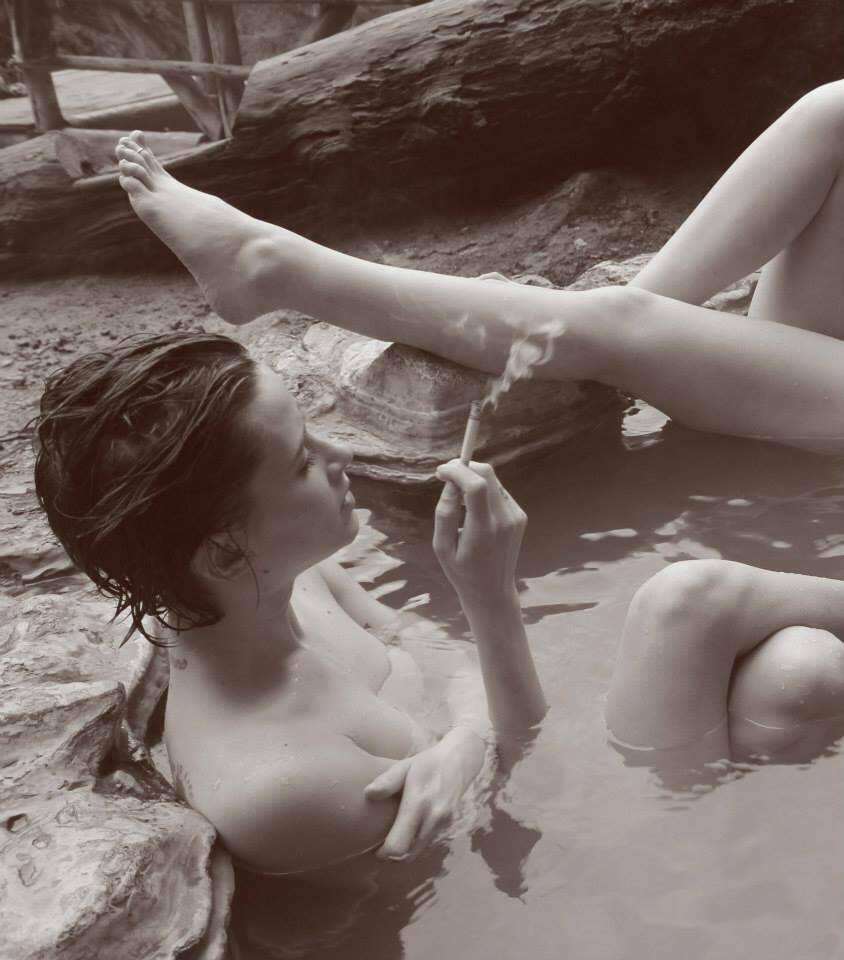
Robyn Weaver relaxes in the company of friends at Umpqua Hot Springs
Umpqua hot springs is located near Toketee Falls and the North Umpqua Trail. There is a steep quarter mile trail to a naturally formed pool that is roughly five feet wide and a couple feet deep. The springs are nestled on a bare rock face that sits 15o feet above the North Umpqua River. The tub is sheltered by an open air roof structure.
This area is clothing optional, and there is a day use fee at the trailhead. The springs were closed in the fall of 2015 due to the presence of harmful bacteria, but have been reopened in January 2016.
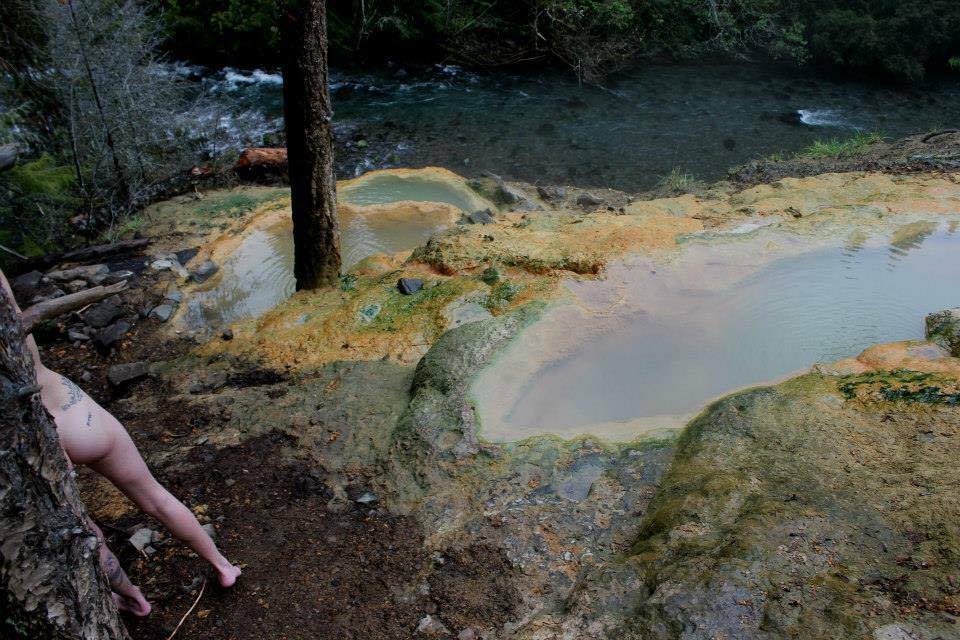
Several pools overlook the scenic North Umpqua River
Pay to soak resorts also offer an alternative to the crowded atmosphere of public hot springs. For a detailed map of the vast collection of Oregon's hot springs, visit soakoregon.com or check out the books "Touring Washington and Oregon Hot Springs" and "Hiking Hot Springs in the Pacific Northwest: A Guide to the Area's Best Backcountry Hot Springs."
NEXT: ELEPHANT SEALS GET MONSTROUSLY HUGE AND BRUTAL IN THEIR FIGHT FOR DOMINANCE
